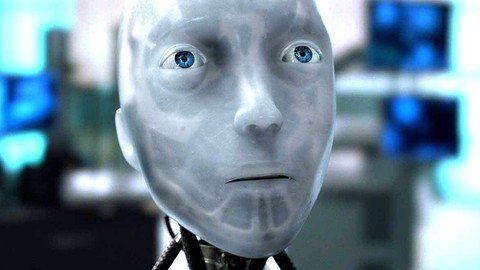
Published 1/2023
MP4 | Video: h264, 1280×720 | Audio: AAC, 44.1 KHz
Language: English | Size: 601.71 MB | Duration: 0h 30m
A.I learning the basics
What you’ll learn
Understanding of AI concepts and techniques: A course on coding an artificial intelligence software should provide students with a solid understanding of key AI
Proficiency in programming languages
Ability to apply AI techniques to real-world problems: Students should be able to apply what they have learned to real-world problems.
Experience with building, testing and deploying AI models: The course should provide students with hands-on experience in building.
Requirements
To create your own artificial intelligence, you will need the following: A solid understanding of computer science and programming, specifically in languages such as Python and C++. Knowledge of machine learning and deep learning concepts, such as neural networks and natural language processing. Access to large amounts of data to train your model. A computer with powerful hardware, such as a GPU, to train and run your models. Development environment like Anaconda and libraries like Tensorflow, Pytorch, etc. Keep in mind that creating an AI system is a complex and time-consuming process that requires a significant amount of knowledge and resources. It can be a challenging task, but the rewards can be substantial if you are successful.
In addition to the basic requirements mentioned above, there are a few other things that may be helpful for creating your own artificial intelligence. Understanding of statistics and probability: A good understanding of statistics and probability is essential for understanding how machine learning algorithms work and for making decisions about which algorithm to use for a particular task. Familiarity with cloud computing platforms: Cloud computing platforms like AWS, GCP, or Azure can provide the necessary resources and infrastructure for training and deploying large-scale AI models. Experience with data pre-processing and cleaning: Before you can train a model, you need to have clean and structured data to work with. Experience with data pre-processing and cleaning can save a lot of time and effort. Understanding of the business problem: Understanding the problem you are trying to solve and the domain in which you are working is essential for creating a successful AI system. Strong analytical skills: Creating an AI system requires a lot of problem-solving and analytical thinking. Strong analytical skills will help you understand the data, identify patterns, and make decisions about the best course of action. Overall, creating an AI system is a challenging task that requires a combination of technical skills, domain knowledge, and analytical thinking. It also requires a lot of time, resources and patience. However, with the right skills and mindset, it is possible to create AI systems that can make a real impact in the world.
Understanding of ethical considerations: As AI systems become more prevalent in society, it is important to understand the ethical implications of these systems and to design them in a way that is fair, transparent and respects privacy. Good communication skills: Creating an AI system is often a team effort, and good communication skills are essential for coordinating with other team members and stakeholders. Understanding of model evaluation and selection: After developing a model, it is important to evaluate its performance and compare it to other models to select the best one. Understanding of performance metrics and model selection techniques will help you in this process. Experience with deploying AI models: Once a model has been trained, it needs to be deployed in a production environment. Experience with deployment and integration of AI models in a production environment is important for a successful AI system. Continual learning and updating: AI systems need to be continually updated and improved as new data becomes available and as the business requirements change. Keeping up to date with the latest developments in AI research and technology is essential for creating a successful system. Creating an AI system is a challenging task that requires a wide range of skills and knowledge. It is a multidisciplinary field that draws on computer science, mathematics, statistics, and domain-specific knowledge. To be successful in creating an AI system, it is important to have a strong foundation in these areas and to be willing to continuously learn and adapt as the field evolves.
Description
There are many courses available that can teach you how to build artificial intelligence (AI) systems. Here is a general outline of what you might learn in such a course:Introduction to AI: This section of the course will provide an overview of the field of AI, including its history, current state, and future direction.Basics of machine learning: You will learn about the different types of machine learning, including supervised, unsupervised, and reinforcement learning. You will also learn about algorithms and techniques used in machine learning, such as decision trees, support vector machines, and neural networks.Data preprocessing: You will learn how to prepare data for machine learning, including techniques such as cleaning, normalization, and feature selection.Building and training AI models: You will learn how to build and train AI models using various machine learning algorithms and techniques. You will also learn how to evaluate the performance of these models.AI applications: You will learn about the various ways in which AI is being applied in different fields, including natural language processing, image recognition, and autonomous systems.Ethics and social impact of AI: You will learn about the ethical considerations involved in developing and using AI, as well as the potential social impact of AI on society.This is just a general outline, and specific courses may vary in their focus and content. Some courses may also include programming exercises or projects to give you hands-on experience building AI systems.
Password/解压密码www.tbtos.com
转载请注明:0daytown » Building An Artificial Intelligence: A Step-By-Step Guide